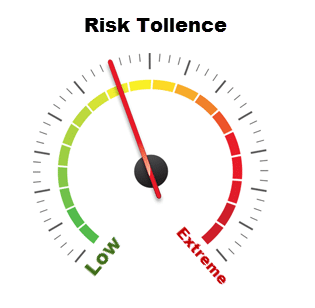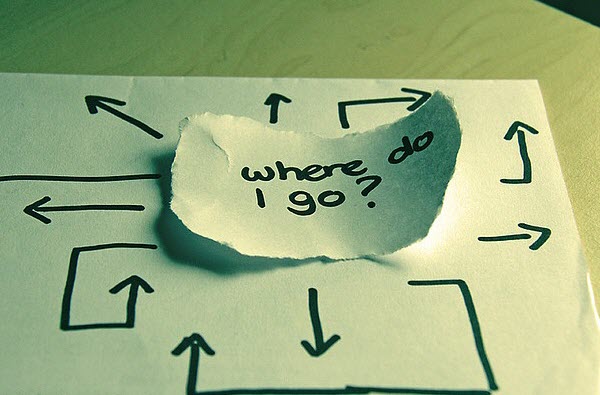Learning to trade Forex is like re-training for a new career, because simply put, you are taking on a new profession.
Yet so many traders starting out for the first time tend to approach it like learning blackjack at the casino tables. Some traders are approaching the markets with the right attitude but just expect to become an ‘overnight expert’.
Much like starting out in a new career. You need to make preparations and build yourself up from square one before you can start trading Forex the smart way.
In this article we are going use our Forex checklist to some critical areas before jumping into the markets with your hard earned cash. There are plenty of DOs and DON’TS when it comes to managing your capital. Without proper planning/management on your part, you have failed before you even begin.
There are ways to integrate trading with your current life/financial situation. Take on trading as a profession without compromising your financial integrity. Let’s go over some points that will allow you trade without reducing the your quality of life outside of Forex.
FORMULATE A TRADING PLAN THAT SUITS YOU
Jim want’s to open a new business, but he has no idea what type business he wants to open. Jim doesn’t know what he is going to sell or what services he will offer. He just simply wants to be a business owner. Peter also wants to open a business, except Peter knows exactly what type of business he wants to run and what he is going to offer his customers. In fact Peter has pre-determined the what, how, when and whys and consolidated all the information into a business plan. Who do you think has a better chance of success here, Jim or Peter?
There is no getting away from the fact that Forex trading is a high octane, potentially stressful endeavor. There will be times that things don’t go the way you want and times when you question whether you are doing the right thing. The market can even punish you for good behavior and reward you for bad behavior, conditioning you to be a bad trader. This is called the random reinforcement principle.
That is why it is so important to have a Forex checklist and a trading plan that you are comfortable with. It’s important you create a plan that not only you understand completely, but also enjoy using. This way you will experience a much higher level of clarity with your trading and have a better chance of sticking with the plan and seeing it through to the end.
Make sure you trading plan integrates well into your normal life. If a trading system requires you to spend hours in front of the screen during London trading hours, and you’re in America where London trading hours run from 2am onwards. Throw a full time job in the mix, you’re not going to be able to see this through. This is one reason why we encourage traders to adopt end of day trading strategies so they can formulate a trading plan which marries well with a busy lifestyle.
Your trading plan should be your ‘trading bible’ which you can follow religiously. You’ll feel confident in your decisions and subsequently feel more in control than if blindly following a system you don’t fully comprehend. Consistency is key for trader’s success and following a trading plan is an excellent way to cement your obligation of consistency in the markets. Make sure your trading plan is ticked off on your Forex checklist before trading real money.
PREDETERMINE A BUDGET
Once you’re comfortable with how you are going to trade, the next step is to set out what you are going to trade. Once again, one of the most common mistakes traders makeinvesting money they can’t afford to lose. This is why a budget is second on our Forex checklist.
Don’t make Forex trading you’re primary focus of a quick fix solution to financial problems. If you’re in major debt and having trouble keeping up with payments. The Forex market is not the solution you need. You will be entering the market already in a heightened emotional state, playing around with money that’s need elsewhere.
Sit down and calculate how much money you need to survive each month. This includes food, bills like electricity, water, gas; debt repayments like your mortgage, car loans, personal loans etc. Once you’ve worked out the total of your monthly expenses, subtract that figure from your total monthly income.
Monthly Income – Monthly Expenses = Investment money
If you get a figure that’s in the negative then you’re not earning enough to cover your living expenses. This should raise some red flags. Create an action plan to fix this deficit before you even think about trading with real money. If you calculations output positive number, this figure becomes your ‘play money’.
Play money is basically money that left after everything is paid off and you can spend freely without compromising your financial situation. You should only invest play money into the markets, because in the event that you do (worst case scenario) blow your account it won’t put you or your family on the street.
I’m sure you will have heard countless times that people should only risk what they can afford to lose, but you’d be surprised how many traders bury themselves deep in debt trying to raise capital to trade with.
There is perhaps no starting point more important to remember than making certain you only invest what you can afford to lose. If you don’t stick to this you are setting yourself up to fail on two accounts. Firstly you will have already set the bar of required early success too high and secondly you will be impeding your ability to approach decisions with a clear and calculative thought process, absent from emotion.
KNOW YOUR RISK TOLERANCE
 3rd on our Forex checklist is to know how much should you will be risking into each opened position?
3rd on our Forex checklist is to know how much should you will be risking into each opened position?
This is where we move away from hard and fast rules, delving into opinions that fluctuate widely in the industry.
Typically accepted standards say that each trade should represent 2% of a fund’s total capital and many people stick rigidly to this. In truth though, there is no right or wrong answer and this is why it is so important to have gone through the previous stages of preparation before getting to this point.
The way to decide how much you put into each trade comes down to two things. Firstly how comfortable you feel with losing the total amount invested in one go, and secondly how confident you are in the outcome of the trade.
Put more simply, if you can’t set the trade and walk away from the computer, forgetting about the outcome until you log in again the next day. Then you are probably risking too much money.
Even career professional traders, the most successful ones at least, can turn off their computers at the end of the day, go back to their personal lives and enjoy a good night’s sleep. Set this as your benchmark for every trade. If you’re open trades are all that is on your mind through the day and are losing sleep at night over them, then you’re doing something wrong.
This is an important point on our Forex checklist. Think about every trade you take, you should already consider that money lost. If the trade comes back as a winner, that’s a bonus. Considering every trade a loser before you place it will help you determine a comfortable level of risk, decrease the chance you will emotionally intervene in the market, or let trading impact your normal life in a negative way.
FOCUS ON BECOMING AN AWESOME TRADER, NOT SOLVING YOUR FINANCIAL PROBLEMS
 This might sound strange because at the end of the day, people are drawn into investment of all kind to make more money.
This might sound strange because at the end of the day, people are drawn into investment of all kind to make more money.
People don’t open savings accounts to learn about national bank base rates. But with Forex, because of the high levels of volatility in the market, having your main focus as riches could put you in harm’s way.
If you stare at the chart you will probably find literally hundreds of ‘hindsight signals’ that appear every day which represent an opportunity to profit. If you are focused on chasing the money, you are possibly going to see a lot of these as “missed opportunities” and beat yourself up over not trading them.
Instead of setting your goal as retiring early with a load of cash, try approaching your Forex trading with the intention of being good at what you do, in this case becoming a good trader.
That way you will be realigning your focus towards perfecting your ability in the markets. If you can commit yourself to becoming a good trader and be passionate about it, the money will naturally flow in. If you focus on making money, then your account will probably slowly drain out. Welcome to the irony of the Forex market.
A football enthusiast trying to make the local team isn’t as bothered about that one great goal they fluked early in their career half as much as being considered a consistently reliable part of the team. If Forex is your sport, don’t think about winning “goal of the month” in your first year of trading, set your targets at being worthy of being selected for the national side.
Those who get into Forex wanting to gain a deep understanding of how the markets work to give themselves a solid knowledge, will go far. Those who are thinking solely of the dollars open themselves up to be blinded by greed and subsequently face some difficult consequences.
WRAPPING UP THE PRE FLIGHT FOREX CHECKLIST
Forex trading’s reputation is often tarnished from the countless stories about people blowing their savings or falling into serious debt from it. It’s not an easy profession to ‘master’ and we know that a lot of traders don’t reach their end game goal of full time Forex trading. Make sure you can afford to trade and never fall into the downwards spiral of treating your activity like a night at the roulette wheel. Check every point off on our pre flight Forex checklist.
Technology and the internet these days allows anyone to become a trader with a few clicks on a mouse and the tapping in of a credit card number. So many people come to this arena with no more planning and preparation than entering lottery numbers. The result, most of the time, is that the account is blown almost as quickly as it was opened. Sound familiar? Don’t worry, you’re not the only one, we’ve all been there.
Hopeully if you’re reading this though, you have realized (like me) that the market is no place to “play around”. Approach the market with a clear mind, focused preparation and the confidence to build your knowledge and understanding.
If you’re a bit lost in the market and find yourself struggling to make sense of what appears to be a ‘chaotic’ and ‘random’ market environment, you may be interested in our war room membership.
If you have a look around this site you will find that our approach to the market is simple, logical and consistent with our price action trading methodology. Our Price Action Protocol trading course is structured so you can formulate your own price action based trading plan that you can feel confident and comfortable trading.
Whatever approach you use with the market, make sure you understand clearly what you’re doing. Check off the points on the Forex checklist and only invest ‘spare’ or ‘play’ money. Be involved with Forex only with the intentions of becoming a good trader, not a fix for financial problems.
Have fun with it guys, and cheers to your professional future trading success.
Money Management Checklist, what do you think of this?







